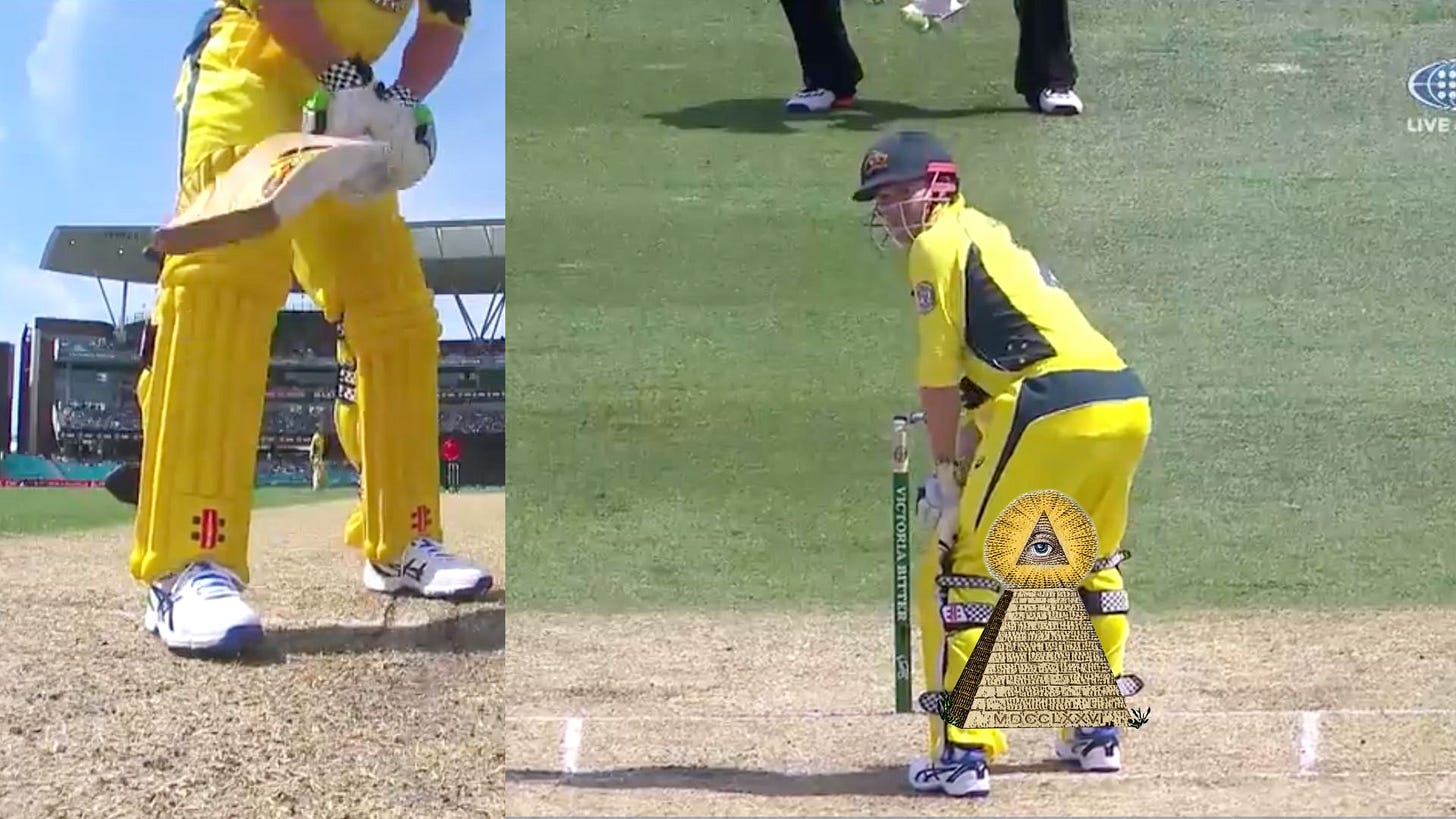Australia's slow Bazball
Day one Lord's, how Australia used some English lessons.
This happened today.
When facing his arch-nemesis. David Warner got down on one knee to sweep Stuart Broad from outside off stump. He did the same against Ollie Robinson later on as well.
Warner has not played shots like this in a long time. (Rest in peace, R Vinay Kumar’s Test career.) This was Warner trying to upset the line and length of Broad; this was Warner trying to do some Bazball on England.
It wasn’t the same. Obviously, there were no scoops, and this was really just a couple of small moments. But the thought process is undeniable, “I do not like the question your line and length is asking, so I’ll answer it my way”.
This is all weirder because, outside one or two players, Australia couldn’t be the more anti-Bazball team.
Undoubtedly, Australia is a more defensive team than most old Aussie sides, let alone Bazball. The Australian team has pragmatism and calmness built into their cricket. That isn’t how we know this team.
Remember that just seven years back, Darren Lehmann would stand in front batting tips saying things like that each batter had to be “aggressive in everything you do!”, that “our first thought is to score”, and the “team philosophy is going to be aggression and freedom going forward”.
If that sounds like Bazball, it is in philosophy without the white ball skills backing it up.
I mean, Lehmann actually had a slide that read, “WTBC” (translation: “Watch the ball, c*nt”).
Of course, this is the new team, derided as woke in some quarters for not being complete arseholes, caring about other players’ feelings and hoping the planet doesn’t overheat.
You can see it from the top down as well. George Bailey is more in the John Inveratity mode (who was often called the professor in slightly mocking tones) of an Australian cricketer who believes you can talk about cricket without just trying harder or being tougher.
Bailey also had theories. Perhaps most famously was when he decided to face very fast bowling by turning his back on it.
Andrew McDonald was another fringe player for Australia. He was a smart cricketer who made the most of his talent. Batting good enough to be a solid number six at first-class level and bowling economic tall seam that kept good players honest. Yet still made the Test team.
Then there was Dan Vettori. A steady left-arm finger spinner and late middle-order grifter. He was more naturally gifted than McDonald or Bailey. But he still had to work on his game throughout his career to thrive at the top level.
That is Australia’s chairman of selectors, head coach and main assistant. I don’t think “watch the ball, c*nt” is their style.
You throw in Pat Cummins, and you have a captain, unlike the vast majority of the chewing-jawed moustachioed set. This is a whole new world of management. A methodical, pragmatic Australian team.
It’s not as big a transformation going from England’s shambles to Bazball. But in the history of Australian cricket, this is quite the shift.
Keep reading with a 7-day free trial
Subscribe to Good Areas to keep reading this post and get 7 days of free access to the full post archives.




